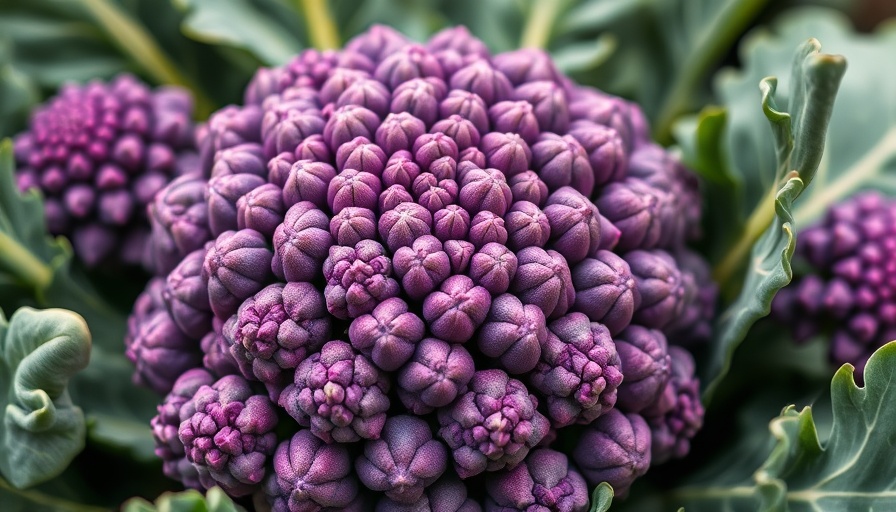
Why Grow Purple Sprouting Broccoli?
Purple sprouting broccoli isn’t just a beautiful addition to your garden; it’s a flavorful and nutritious vegetable that thrives in cooler weather. Known for its unique purple hue and tender texture, this broccoli variety grows multiple side shoots instead of a single head, offering a fresh take on traditional broccoli. It’s an ideal option for gardeners looking to diversify their harvest.
Understanding the Unique Growth Cycle
This unique vegetable requires specific growth conditions to truly flourish. Unlike standard broccoli, purple sprouting broccoli demands a vernalization period — 6 to 8 weeks of temperatures below 50°F. This exposure conditions the plant to produce shoots rather than just leaves; hence, successful growers usually reside in climates where winter lows hover between 15°F and 40°F. Understanding this growth requirement is crucial to achieve a successful harvest.
The Perfect Planting Timing
The best time to plant purple sprouting broccoli is in the late summer or early fall. This timing allows the plants to become established before the onset of frost, thus making full use of the cool growing season. Harvest typically occurs from late February to April, just in time when other fresh produce may be sparse. By incorporating this vegetable into your gardening schedule, you can extend your harvest season.
Benefits of Growing Purple Sprouting Broccoli
Beyond the aesthetic appeal and unique taste, purple sprouting broccoli boasts impressive health benefits. Rich in anthocyanins, this antioxidant-rich vegetable supports immune health and may even enhance cognitive function. Adding this versatile broccoli to your diet is easy — enjoy it raw in salads, lightly steamed, or sautéed as a colorful side dish.
Simple Steps to Cultivate this Broccoli
Growing purple sprouting broccoli is straightforward, yet requires attention to detail. Here’s how to ensure you reap a bountiful harvest:
- Soil: Well-draining, nutrient-rich soil is essential. Amend with compost for the best results.
- Spacing: Provide ample space between plants to encourage air circulation and proper growth.
- Watering: Keep the soil consistently moist but not soggy. Regular watering will promote robust growth.
- Fertilization: Use a balanced fertilizer to support healthy plant development throughout the growing season.
Harvesting Tips for the Best Flavor
To achieve the best flavor, begin harvesting the central head first when it reaches about 3 to 5 inches in diameter. Once the head is cut, the plant will produce additional side shoots that can be harvested over several weeks. It’s best to enjoy the florets fresh to appreciate their unique colors and flavors; however, cooking does turn them green — slightly diminishing their vibrant hue, but not their taste!
Conclusion: Transform Your Garden with Purple Sprouting Broccoli
Growing purple sprouting broccoli can bring numerous benefits to your garden and table. With its nutritional advantages, visual appeal, and suitability for cooler climates, it's the perfect vegetable for anyone wanting to bolster their home garden. Start planning for this exceptional crop today; you won’t regret the flavors and variety it brings.
If you’re ready to dig your hands into the soil and enrich your diet, why not start your journey with purple sprouting broccoli? Your garden—and your tastebuds—will thank you!
 Add Row
Add Row  Add
Add 


Write A Comment